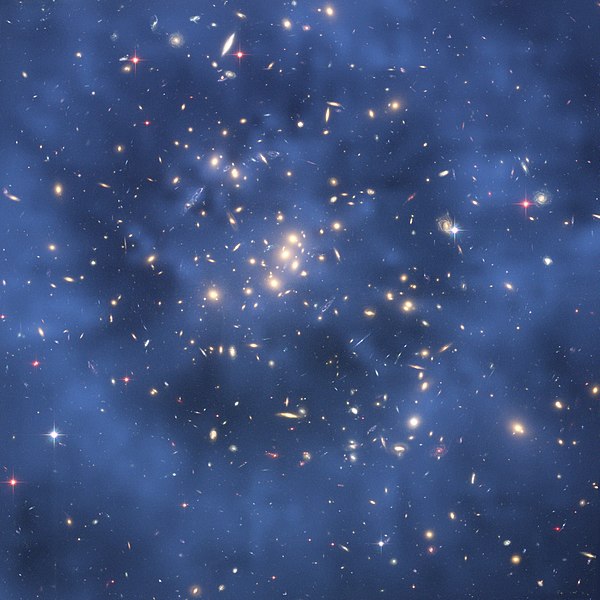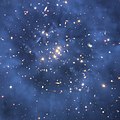File:CL0024+17.jpg
Appearance

Size of this preview: 600 × 600 pixels. Other resolutions: 240 × 240 pixels | 480 × 480 pixels | 768 × 768 pixels | 1,024 × 1,024 pixels | 2,048 × 2,048 pixels | 3,921 × 3,921 pixels.
Original file (3,921 × 3,921 pixels, file size: 23.03 MB, MIME type: image/jpeg)
File history
Click on a date/time to view the file as it appeared at that time.
| Date/Time | Thumbnail | Dimensions | User | Comment | |
|---|---|---|---|---|---|
| current | 13:33, 19 July 2009 |  | 3,921 × 3,921 (23.03 MB) | Tryphon | Original size. |
| 01:36, 17 May 2007 |  | 1,280 × 1,280 (1.75 MB) | Clh288~commonswiki | {{Information |Description=Astronomers using NASA's Hubble Space Telescope have discovered a ghostly ring of dark matter that formed long ago during a titanic collision between two massive galaxy clusters. The ring's discovery is among the strongest evide |
File usage
The following 10 pages use this file:
Global file usage
The following other wikis use this file:
- Usage on af.wikipedia.org
- Usage on ar.wikipedia.org
- Usage on az.wikiquote.org
- Usage on bcl.wikiquote.org
- Usage on bn.wikiquote.org
- Usage on cs.wikipedia.org
- Usage on cy.wikiquote.org
- Usage on el.wikipedia.org
- Usage on en.wikiquote.org
- Henry David Thoreau
- Leo Tolstoy
- Niels Bohr
- Karl Popper
- Arthur C. Clarke
- Friedrich Nietzsche
- Kate Bush
- Emily Brontë
- Ludwig Wittgenstein
- Helen Keller
- Joseph Addison
- Isaac Newton
- Jorge Luis Borges
- Edgar Allan Poe
- Fyodor Dostoyevsky
- Stephen Hawking
- Nikola Tesla
- Leaves of Grass
- Julian (emperor)
- Richard Feynman
- Four Quartets
- Eric Hoffer
- Jack Kerouac
- Aldous Huxley
- Aleister Crowley
- James Branch Cabell
- Denise Levertov
- Ken Wilber
- Rumi
- William James
- Kurt Vonnegut
- Arthur Schopenhauer
- Georg Christoph Lichtenberg
- Thomas Edison
- Robertson Davies
- Denis Diderot
- Robert Anton Wilson
- Robinson Jeffers
- Anthony de Mello
View more global usage of this file.


